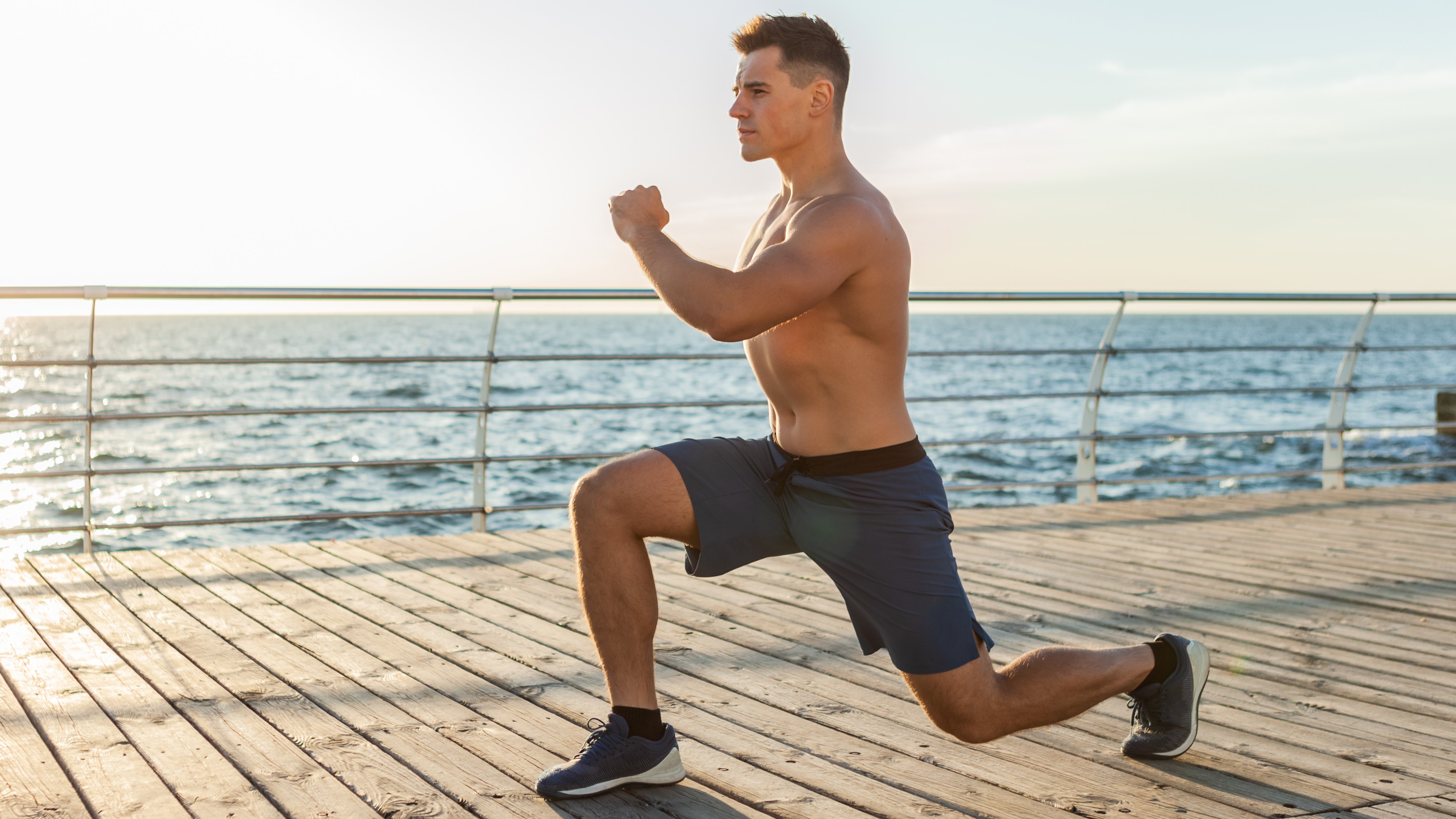I did the lunge crunch for a week — here’s what happened to my legs and abs
This is one of those moves that takes a step back and then throws in a twist – literally

The basic lunge is a great lower-body exercise. It works several muscles at the same time, builds strength, challenges stability, tackles imbalances, and feels (sort of) natural. But I rarely do reverse lunges — maybe I just don’t like going backward — and before this challenge, I had never done a set with crunches thrown into the mix.
What is a lunge crunch?
Do a lunge, but backward, and at the end, standing tall, throw in a crunch to the side. That’s it. You’re probably thinking: That was suspiciously easy to describe. You’re wise to be wary.
The main difference between the forward and reverse lunge is that the regular version places more emphasis on the quads, while the reverse gives the hamstrings more to do. But the main advantage of stepping backward is that you place less pressure on your knees, which are a problem area for many people. This made me wonder why more people don’t do them in gyms. And then I tried them.
Adding the crunch at the end of each lunge simply gives the abdominals a low-intensity workout.
How do I do a lunge crunch?
Here's how to master the lunge crunch with perfect form:
- Stand tall, feet hip-width apart, arms raised and elbows bent, with your fingers touching the sides of your head. This will naturally draw back your shoulder blades and aid your posture.
- Step back with your right leg and, landing lightly with your toe first, bend both knees until your legs form 90-degree angles. Engage your core and maintain an upright torso, chest forward.
- Drive off from your front foot (your left in this case) and step your back leg forward and up to the left, maintaining a bend in the knee.
- As you raise your leg, twist at the torso and crunch so your left elbow and right knee almost touch (do not force this; go as far as you comfortably can).
- Return to start position and repeat on the other side. That’s one rep. Aim for three sets of 10 to start and go from there.
I did the lunge crunch every day for a week and this is what happened
I was neither looking forward to nor dreading this challenge, which is the same way I feel about Tuesdays, toast, and school reunions (because I’d never dream of going to one). That in itself made me curious. Or skeptical. It was hard to tell.
It’s hard to take a step back — really
To begin, I suggest using a mat for this one, as your knee is at some point going to come into contact with the floor more abruptly than you’d like. This will probably happen at the end of your set, when you’re tiring; or at the beginning, when your form leaves something to be desired.
Get instant access to breaking news, the hottest reviews, great deals and helpful tips.
Throughout the week, I found taking that step back and lowering became easier, but never as smooth as I hoped. Because it’s not an exercise I tend to do, I felt it acutely in my inner thighs on the first day, to the extent that I thought I’d pulled something, but this was just little-used muscles and tendons being caught sleeping on the job. Within a day or so, the tightness had vanished and I was moving with my customary elegance. This, of course, meant I was resetting my position much of the time, rather than smoothly transitioning from one lunge to the next: it was lunge, return, twist, touch foot briefly on the floor, and lunge again. There is nothing wrong with doing this, but I admit I felt deep satisfaction later in the week when I could roll through the movement without finding my spot with my toe and without bouncing my knee off the mat. I was, for a glorious moment, gliding. That said, I felt even better — with a side order of stupid — when I began to alternate legs with each lunge, rather than trying to do 10 reps on each side before switching. Alternate: It’s a better way to travel.
And here’s the twist…
The crunch part of this move never worked for me. As dynamic as the exercise looks (nothing to do with me; it’s all in the movement), not once did I have the feeling my core was getting anything like a decent workout. Initially, I wasn’t returning to a fully upright position after the lunge; instead, I was preparing to turn my torso left or right and down to meet my rising knee. But even after I corrected my form and was twisting like a dad at a wedding, I still felt little in the way of effort. I had to conclude that with this move, the crunch is something of an afterthought. It may be a way to ease in to working your core, but there are plenty of exercises you can do that will challenge these muscles without you having to worry that you’re about to brain yourself with your knee. And they won’t ask you to throw in a lunge, either.
Inside knowledge
The main thing I learned during this challenge is that my adductor muscles are not getting enough attention. The adductors (often lumped together as ‘groin muscles) bring your legs towards the center of your body (adduction) and are vital for stability and mobility during daily activities such as walking or going upstairs. Because of where they are, and because they’re workhorses rather than show ponies, they tend to be neglected. Lateral lunges and wide-stance squats such as the sumo squat are great for targeting your adductors. I’m not unfamiliar with the sumo squat, but I guess I’m going to have to go low more often.
Because the reverse lunge challenges the body in a different way than the regular lunge, I’m going to continue to do it – it’s a very good lower body exercise – but I won’t be adding the crunch element. Try it for yourself, but watch out for those flying knees. They really are the body’s dirty fighters.
More from Tom's Guide
- Forget running — it only takes these 5 exercises to sculpt your lower body and abs
- Forget squats — you only need 1 dumbbell and 5 exercises for this full-body workout
- 5 standing ab exercises that sculpt your core with one kettlebell
John is a writer and editor based in London. He was worked for magazines such as Runner’s World, Men’s Health, Women’s Health and Cosmopolitan. A keen runner, what he lacks in ability he makes up for with enthusiasm and excuses.

